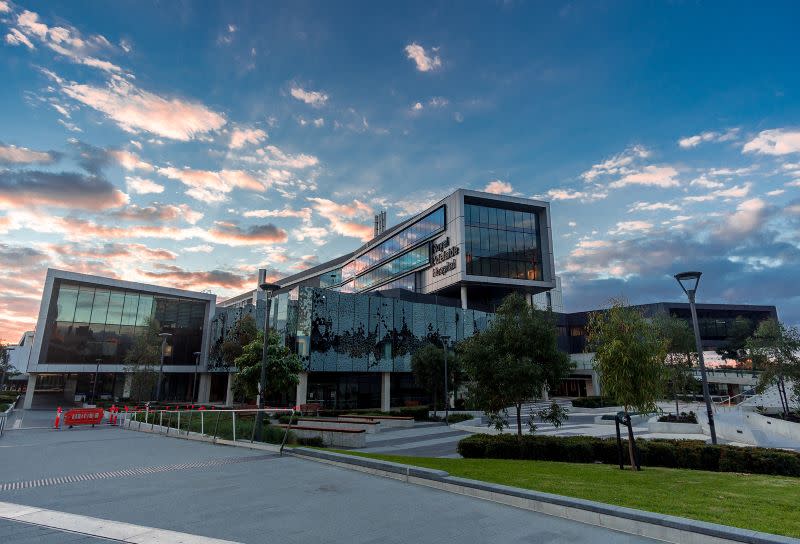Resources
Newsletter
Stay up to date and with the latest news, projects, deals and features.
Subscribe
In the dynamic landscape of construction and development, the escalating costs of materials, labour and the scarcity of skilled workers loom large as formidable challenges, according to insights shared by Deicorp’s Robert Furolo.
“Risks like these need to be priced into the feasibility of projects,” Furolo told BCI Central in a recent interview.
Furolo’s caution echoes sentiments from top players in construction, development and architecture who provided insights on Australia’s construction industry in BCI Central’s free Construction Outlook report.
Stakeholders such as Jack Hutchinson of Hutchinson Builders, Adam Ashcroft of Growthbuilt and others offered insights on challenges, acquisition methods and expected workloads in 2024.
The high-level industry feedback offers nuanced insights, enabling built-environment professionals to understand current challenges and opportunities more comprehensively.
Here are three key takeaways into how Australia’s construction leaders prepared for 2024:
While property investors are familiar with retail, office and industrial space, many have overlooked the opportunities in the thriving healthcare and life-sciences sector, which is experiencing global growth, particularly in Australia due to increased government support post Covid-19.
Institutional investors are attracted to these sectors due to favourable trends, including an ageing population, increased hospital visits among older demographics and higher adoption of private health insurance.
The commitment to the sector has demonstrated increased significance year-on-year, with one in three respondents actively selecting it as a sector they operate in, as revealed in the BCI Sentiment Survey.

Although most respondents are active in the residential sector, significant participation is also noted in the education and office sectors in 2023, each standing at 46 per cent among the surveyed group.
Diversifying into new project sectors, alongside upskilling staff, emerged as the top priority for builders when asked about their business focus over the next 12 months. In contrast, it ranked as the third most important focus for developers and architects.
“Currently, we are navigating the market conditions, particularly in sectors that seem to be static and perhaps suggest a potential upswing around 2024 or thereabouts,” RSHP managing director Avtar Lotay said.
Despite a significant workload filling pipelines, Australia’s construction industry is still grappling with post-pandemic challenges. A concerning aspect is the worsening skill shortages in construction, which could undermine national goals to build 1.2 million homes.
The anecdotal challenges reported by survey respondents are notably consistent, with talent acquisition standing out as the predominant concern across all tiers of the construction industry.
BCI Central asked builders to gauge the severity of securing construction materials, the escalating cost of materials and skilled labour shortages on a scale from one to 10, from not an issue to a major problem.
A staggering 91 per cent of builders surveyed cite labour shortages as a key challenge to their businesses in 2023.

“At the moment, because there’s been such a shortage of labour, and there’s been a lot of subcontractor insolvency going on anyway we’ve had to self-perform more work,” Hutchinson Builders director Jack Hutchinson told BCI Central.
Adam Ashcroft, general manager at Growthbuilt, echoed the sentiment, highlighting that “the scarcity of subcontractor labour will remain a challenge, impacting our ability to deliver projects within stipulated timelines.”
“[To mitigate subcontractor risk] we conduct multiple interviews, emphasising the contractor’s commitment to understanding the project’s schedule and resource requirements.
“Our selection process prioritises the most suitable contractor for the project, which may not always equate to the most cost-effective option.”
The construction industry plays a key role in tackling urgent issues such as the housing crisis, achieving net-zero emissions and meeting infrastructure needs driven by population growth.
Ashleigh Porter, the chief operating officer for Australia and New Zealand at BCI, observed that there was a rise in the number of projects entering the pipeline during the early phases of concept and design, indicating an anticipated surge in work within the next 12 to 36 months.
However, she noted that businesses were still anticipating challenges with certain persistent obstacles.
In the financial landscape, inflation reverberates across the industry, ranking as a top-three impact for developers, builders and architects. Additionally, supplies and services costs are universally noted, with almost half of developers surveyed also highlighting the impact of interest rates on their companies.

Despite a challenging environment, half of the respondents maintained the same amount of work throughout 2023 as the previous year.
In acquiring new work, repeat clients, referrals and networking are the top three methods for all respondents. Architects and builders closely align, with over 70 per cent of each group relying on repeat customers, while only 22 per cent of developers prioritise repeat clients, preferring referrals.
Discovering new work opportunities often involves using tools such as BCI Central’s LeadManager, which offers real-time project and company data. Stakeholders enjoy seamless connections and project identification, while LeadManager enables opportunity spotting, key player contact, pipeline management and CRM integration.
Access invaluable industry sentiment, unparalleled national pipeline data and key trends shaping the Australian construction industry in 2024. Dive deeper by downloading your free copy of the BCI Construction Outlook.
The Urban Developer is proud to partner with BCI Central to deliver this article to you. In doing so, we can continue to publish our daily news, information, insights and opinion to you, our valued readers.